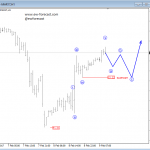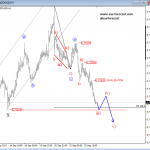Bulls and Bears: An Introduction to Important Market Terminology

The financial markets are a struggle between two competing forces: fear and greed. On the battlefield, this tug-of-war is waged between the bulls and the bears. What they are and how they operate are crucial in understanding the financial system and your place in it.
In finance, a bull is an investor who thinks the market is poised to rise. These investors purchase securities under the assumption that they will continue rising, which enables them to sell at a higher price. A bull market is when a group of securities, such as a stock index or precious metals, are rising1. While the definition of a bull market varies, it is usually identified by a 20% increase in prices from the most recent low2. If the market changes by this amount, you can be quite certain that a trend reversal has occurred.
Considered more broadly, bull markets are usually associated with strong economies, higher employment and more spending. At the same time, riskier financial assets such as stocks are on the rise. In other words, it’s usually good to be in a bull market.
On the flip side, a bear is an investor who thinks the market is poised to decline. These investors attempt to profit from a decline in prices. Like bulls, bears exist in all types of markets. A bear market is when a group of securities are falling, and is usually defied as a 20% decline in prices from the most recent high. This allows traders to be fairly certain that a change in market direction has occurred.
Oftentimes, investors also speak of bullish and bearish sentiment. Bullish sentiment is usually defined by investors’ optimism that a market or security will rise. Bearish sentiment is marked by pessimism about where prices are headed.
As one could imagine, bulls and bears use various techniques that allow them to profit from the market’s direction. Bulls might employ a buy-and-hold strategy or get in on an asset when it has temporarily declined. Bears usually make money by short-selling – that is, buying low and selling high, but in reverse order. They sell first and buy (they hope) once the price has declined3.
We see bull and bear markets all around us. Several global stock indexes entered bear market territory earlier this year, including Japan’s Nikkei4, China’s Shanghai Composite5 and the UK’s FTSE 1006.
On the flipside, 2016 was marked by major bull markets for both gold and silver on the back of stronger safe-haven demand7.
The bulls and the bears are in a constant struggle. In order to learn which side will prevail, it’s important to study market trends and improve your technical and fundamental analysis.
Remember: bulls and bears aren’t permanent positions, and you’re expected to alternate between the two as market conditions change. Now that you understand the market’s terminology a little bit better, it’s time to join the battle!
1. Investopedia. Bull Market.
2. Money Instructor. What is a Bull and a Bear MARKET?
3. Investopedia. Bear.
4. Chao Deng (January 20, 2016). “Japan’s Nikkei enters bear market as Asian stocks fall.” MarketWatch.
5. Chao Deng (January 15, 2016). “China stocks sell off, enter a bear market.” MarketWatch.
6. Ed Monk (January 21, 2016). “FTSE 100 bear market: what does it mean for me?” The Telegraph.
7. Frank Spadafora (September 20, 2016). “Life-Changing Bull Markets – 2016 Ready, Set, Sell? Commodities Bottom!” StockCharts.
Find more: Contributing Authors





























